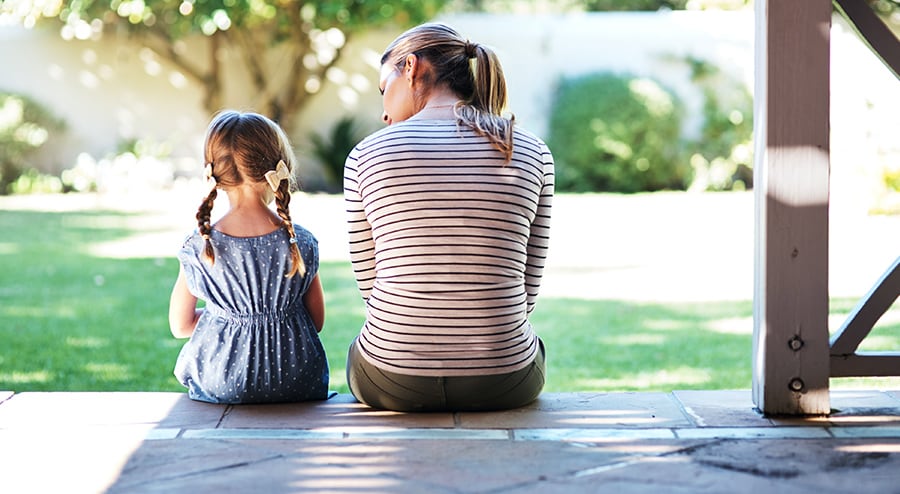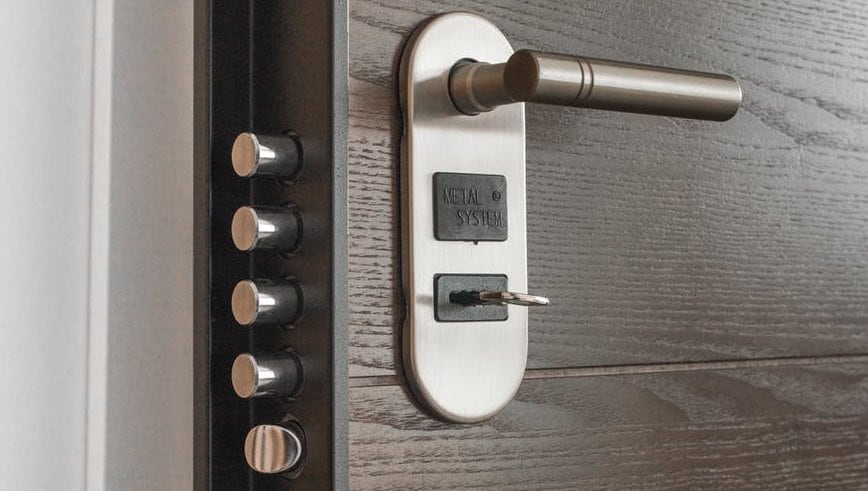The home is supposed to be where you and your family are safe and protected but every year accident and emergency units deal with serious injuries and sometimes fatal accidents that occur in the home. It is not just children and the elderly that can come to harm potential safety hazards in the home with things like chemicals and choke hazards. Accidents in the home claim 18,000 lives each year in America alone. It is the common household hazards that account for 21 million medical visits annually, which costs a staggering $220 billion a year.
Many of these accidents are preventable and dealing with a serious accident that could have been avoided can lead to a lifetime of guilt.
We have put together this quick guide to alert you to the hazards in your home so that you can keep your family as safe as possible.

1. Falls
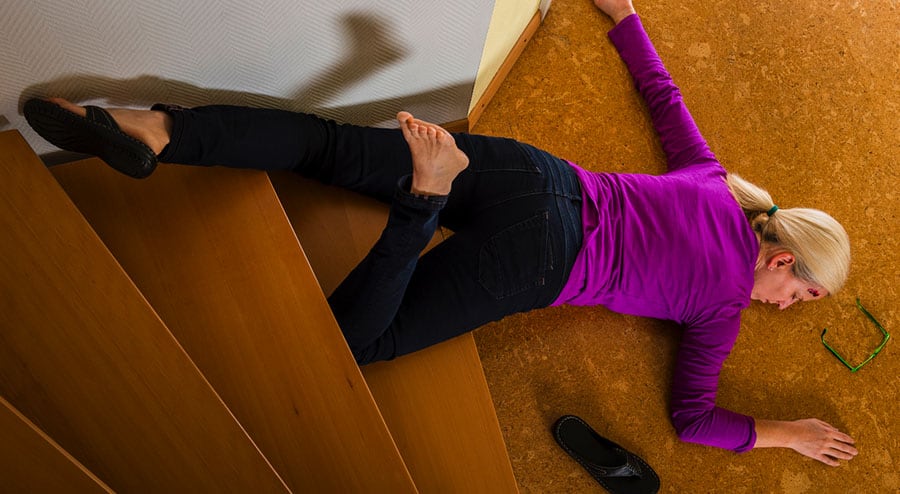
Falls are the leading cause of death when it comes to home accidents. They make up a third of all fatalities. The elderly are most affected by this type of accident. Fatalities aside, when an elderly person falls the associated problems are far more serious. While younger people may also suffer a broken bone, a broken bone is a far more serious problem for an older person in terms of healing.
Hip fractures are a serious problem, particularly for those aged 75 and over and can lead to long-term care needs and serious mobility issues. Follow these tips to stay safer.
To increase bathroom security secure a rug and prevent water from leaking in the toilet. SlipX Safety Treads provide an effective way to stop people from slipping when in the bathroom.
Stairways Should Be Clear At All Times
Adults can fall down a staircase as easily as children. Keep the staircase clean, and free of toys or obstructions that can cause someone to trip. Look to see if the carpet has folds as this can also lead to trips. Check the handrail for stability. If a handle rail is worn out, tighten the screw to ensure that it is safely secured to the wall. Stairs are best lighted with high-quality overhead lights. Never leave a door to a stairway open as this is another potential risk for falls.
Minimize The Risk
- Staircases: Keep children safe from tumbling down steps by installing safety gates at both the bottom and top of staircases. Keep everyone safe by making sure the lighting is good and the handrails and steps are solid and well-maintained. Elderly people with less mobility should consider installing stairlifts or consider moving to a home without stairs to avoid falls.
- Bathrooms: Anyone is susceptible to falls in the bathroom due to slippery wet surfaces. Whilst not the most hygienic type of flooring for a bathroom, those at risk of falling should consider having bathroom floors fully carpeted. Showers should have rubber mats to prevent falls from wet surfaces. Have mats or towels placed on the floor when getting out of the bath or shower? The elderly should consider investing in hoists or seats to make showering and bathing safer as well as a water-proof medical alert device.
2. Poisoning
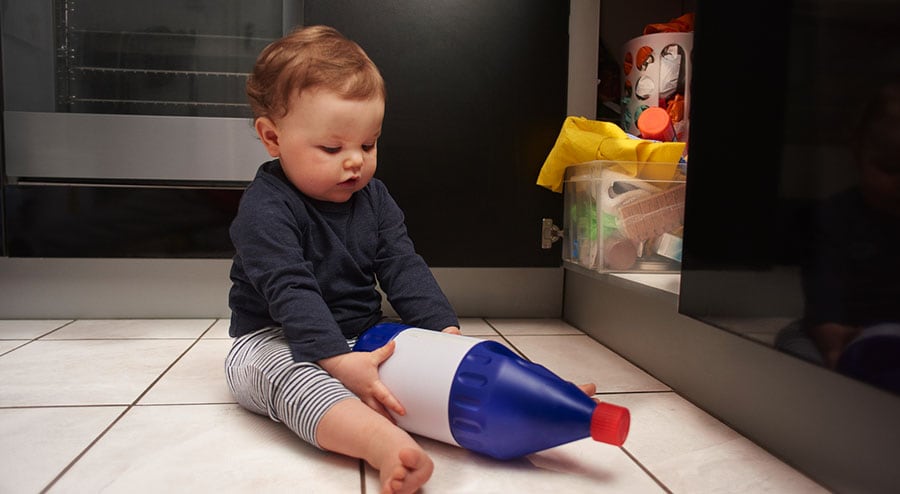
The second leading cause of fatalities is poisoning which leads to 5,000 deaths a year in the U.S. This is a particularly heartbreaking statistic as for the most part curious young children are affected by this type of hazard. Prevent your child from serious injury and becoming one of these statistics by following the following safety tips.
Minimize The Risk
- Any cleaning products and harmful substances if kept in the kitchen should be stored in cupboards out of the reach of small children in higher cupboards. If they are kept in lower cupboards, make sure you invest in inexpensive childproof locks for these cupboards.
- Store paint and pesticides in garages and sheds that are locked and on high shelves away from children.
- Monitor children in the kitchen and do not leave them unattended.
- Label all unmarked containers and do not store products in food containers.
- Have the details of the poison control center number in your area to hand and have it stored on your mobile phone. In the event of poisoning, you need to act fast.
3. Carbon Monoxide
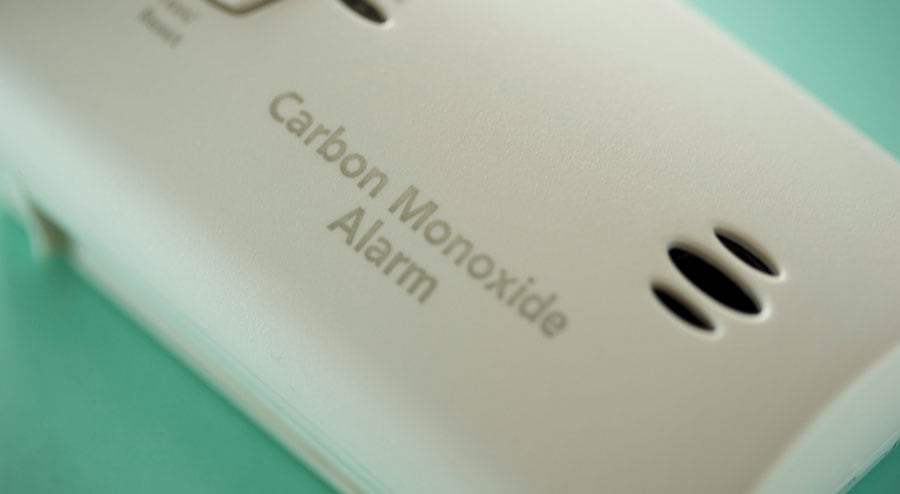
Carbon Monoxide is a silent killer. Carbon monoxide is not visible and has no smell or taste, but it kills more than 50 people each year and sends hundreds to hospitals. Only with the use of carbon monoxide detectors can we detect this presence. A carbon monoxide detector must be mounted within six feet of any appliance that creates carbon monoxide such as a gas stove or water heater. Functional carbon dioxide detectors are inexpensive and are effective at protecting you against unnecessary costs.
Minimize The Risk
- Ensure that you have carbon monoxide detectors in your home and test them regularly.
- Ensure your heaters are checked annually to prevent danger from carbon monoxide poisoning.
- Some home security systems have carbon monoxide detection and will alert you early to unsafe levels in your home.
4. Fire Hazards
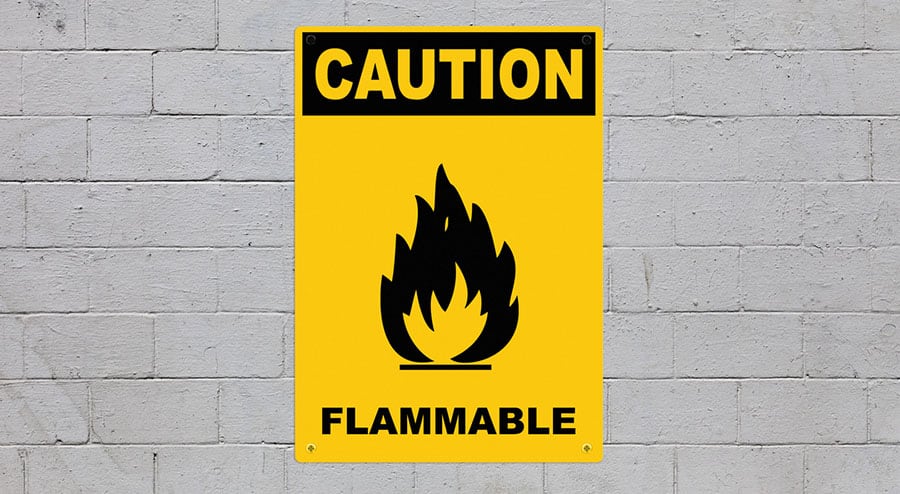
Fires are another danger that many homeowners may be familiar with. Fires in the house are common hazards usually caused by faulty electrical wiring inside the wall, electrical wiring in the appliances, or a malfunctioning electrical outlet in the building. Even candle-using is a risk, but even a simple one may ignite a burning flame. While sometimes fire can be seen, it can often be ignored or forgotten even in instances where there’s no presence or attentive intervention to prevent escalation.
With over 3,000 American lives claimed each year from fire hazards, this is why fire hazard is the third biggest killer as far as home accidents are concerned. Follow these steps in your fire prevention plan to avoid fatalities and devastating burns to loved ones as well as damage to your home and belongings.
Minimize the Risks
- Install smoke detectors in the kitchen, bedrooms, and basement.
- Test your alarm monthly and ensure you replace the batteries twice a year.
- Consider a home alarm system that detects smoke. This will not just raise an alarm like a usual smoke detector but it will contact the local fire department and help will be on its way. This is particularly useful should a fire render the householders incapable of response due to smoke inhalation.
- Be careful when cooking and NEVER leave a pan of oil for deep-frying unattended. If the pan catches fire use a damp tea towel to deal with the flames, never try to put the fire out with water.
- Have your electrical wiring tested regularly by a qualified electrician.
- At Xmas, a major hazard and devastating tragedy is fires, which can start from faulty Xmas tree lights. Ensure your festivities are not ruined by a fire by switching off all Xmas lights before you go to bed.
- Keep matches and lighters away from children.
- If you smoke, take care to extinguish all cigarettes carefully.
- Never leave a candle burning overnight.
- Have a fire safety plan that everyone knows and carefully plan how you will exit the home.
5. Drowning
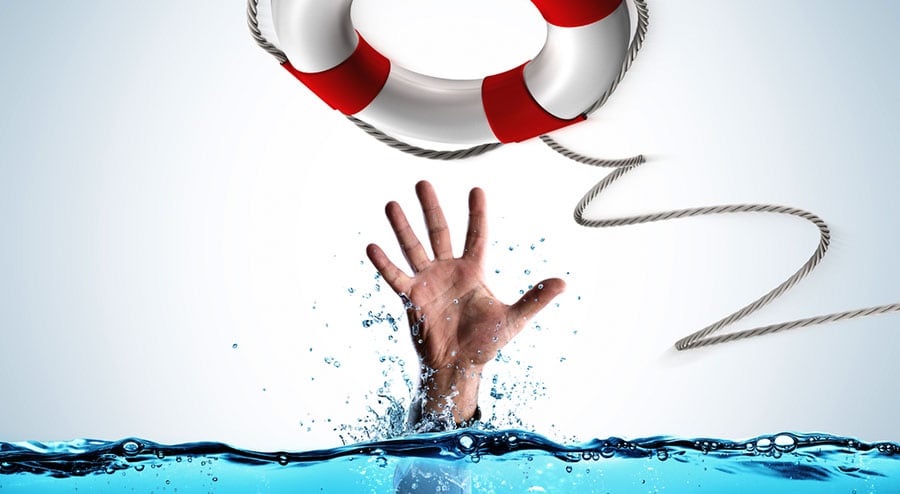
Children aged from one to four years old are at serious risk of drowning. In fact, it is the leading cause of fatalities and injuries in this age group. Children this age can drown in just two inches of water and 800 deaths occur each year in the U.S. alone in this tragic kind of accident. Follow these steps to keep your little ones safe.
Always keep swimming safety equipment at hand. Fence the pool completely and lock the gate. If you have a smart home security device that allows you to access the pools you are using, you may also want to put an alarm system on your phone. Always supervise children and adults while swimming and adopt a zero-tolerance policy in the event they run into rough homes in the pool.
Minimize The Risk
- Always supervise babies and young children when bathing. If the phone rings at bath time, then leave it. It is not as important as your child’s safety. Ring them back when bath time is over!
- Keep toilet lids closed.
- If you have a swimming pool or pond then it should be in a fenced area. Never leave children in an unsupervised situation when water is about, including paddling pools.
- Don’t use electrical items in the bathroom.
6. Choking
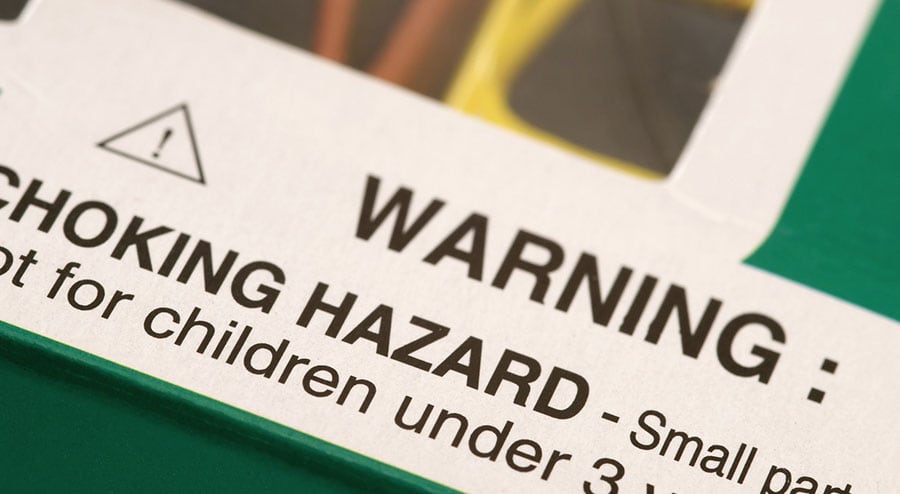
Choking is a hazard for small children who have a tendency to put small objects in their mouths! Toys and small objects pose some risks, however, children can eat food and choke as frequently as they might with toys. Even corn and uncooked cherry tomatoes can be dangerous. If you are unsure, cut the piece down. Make sure to keep small, hard candies out of reach of children. As a safety measure, everyone could learn together how it works at Heimlich.
Window cords also present a risk to children, however, they can be cut so that they can be easily retracted by adults. Or maybe you want the curtains to have a new design with no cords. You can also use cordless shades on your windows for privacy and security. If you use extension cords, you should always remove them from your home.
Follow these tips to keep your child safe:
Minimize The Risk
- Always watch small children.
- Know how to perform first aid on your child should they start to choke, this includes knowing how to perform the Heimlich maneuver on your child if needed.
- Make sure your child plays with toys that are age-appropriate and from reputable companies with no possibility of small breaking parts.
- Follow safety procedures when putting babies to sleep and ensure there are no choking hazards in the bed.
- At mealtimes, cut up food into small pieces for young children. Teach them to chew and swallow and do not give them large hard candy which is easy to choke on.
7. Sharp Objects
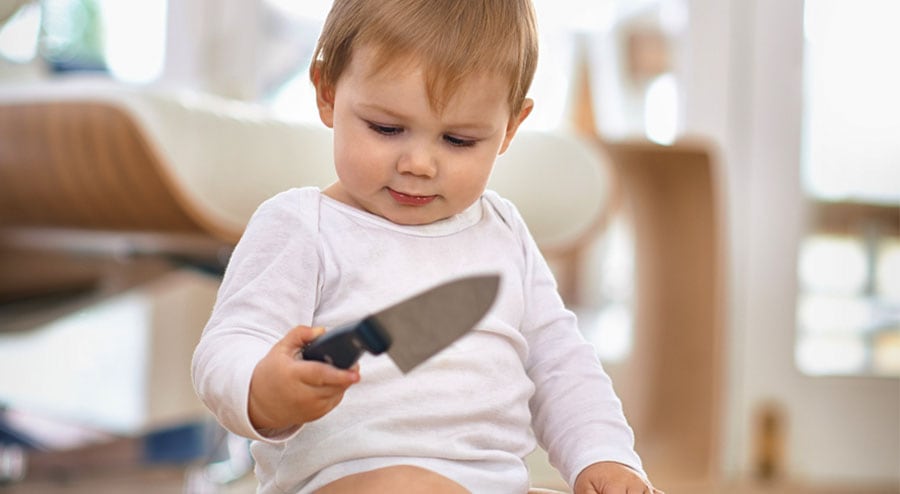
Knives are not just dangerous items. The peeler or grater can contain sharp edges that need to be kept out of children’s reach. But sharp things can also be encountered in the house and not just on the kitchen table.
Razor blades should be secured in bathrooms. Make sure gardening equipment is stored correctly and children will never confuse them with toys. In the bathroom, after using a razor, store the blade on a high shelf above the counter. Easily store additional blades in drawers with guards, and you can even store other groomer tools such as cuticle scissors. Safe Locks for Kids can be installed around the house easily and prevent accidental injuries.
In the garage, lawnmowers may cause injury to a child. Always keep an eye on your power tools. Keep everything on hand. Always keep your tools away from small children.
We all have plenty of sharp objects around the home that are necessary for home safety hazards and home maintenance supplies but in the hands of small children, they can be lethal. Follow these steps to keep your family safe.
Minimize the Risk
- Keep kitchen knives and graters away from children in locked drawers.
- Learn how to use knives safely and efficiently, if you don’t know how to chop, slice, and dice without risking your fingers then watch some short videos online.
- Store sharp knives with shields to cover the blades and take care when washing.
- Keep items such as rakes, saws, and lawn mowers, locked away safely in garden sheds. Follow safety procedures and use caution when using garden tools. Remain vigilant to avoid accidents while gardening such as tripping and stumbling and electrical hazards.
8. Stoves
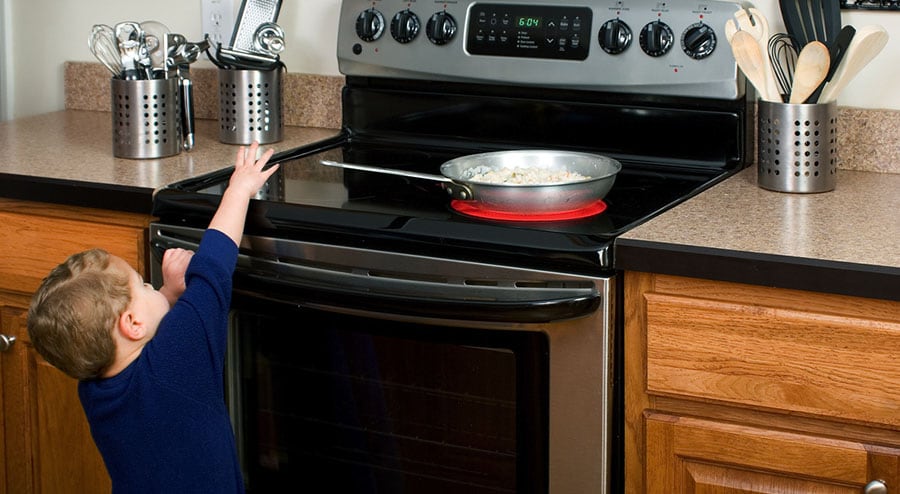
Stoves present a significant danger for a variety of reasons. Keep safe by following these tips:
Minimize The Risk
- Use the burners at the back if children are about to make it more difficult for children to reach up.
- Pan handles should face inwards so that children cannot grab them.
- Correct installation is essential to make sure that the stove does not tip over.
9. Dishwashers
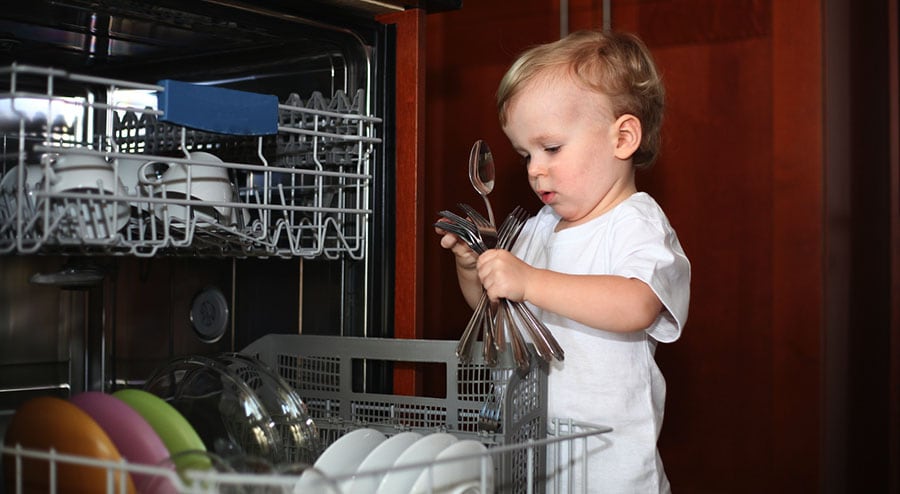
Dishwashers are a great timesaving addition to any household but they do pose a danger. Keep your children protected by putting the knives and spoons in the dishwasher utensils basket downwards. When unloading the dishwasher, remove the container so that sharp objects are not as accessible. Follow these steps to avoid accidents occurring:
Minimize The Risk
- Ensure that, when you place knives and forks in the dishwasher, blades and prongs are facing downwards to avoid cuts.
- Unload the dishwasher after use so that small children are at minimal risk of getting their hands on sharp objects or wash them separately.
- Never leave the dishwasher preloaded with detergent.
- Dishwashers work by washing your dishes at high temperatures. Make sure that the dishwasher is securely latched so it cannot be opened mid-cycle, which could cause burns from steam and hot water.
10. Suffocation
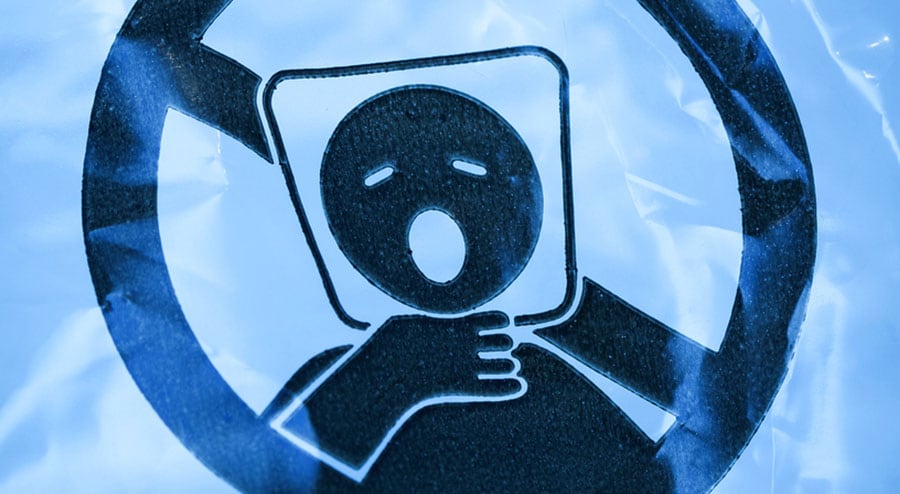
Toddlers and young children are at risk of suffocation in your home. Follow these simple steps to avoid accidents and potential fatalities.
Minimize The Risk
- Keep trash bags away from children and other bags that are a hazard.
- Keep strings, cords, and ropes out of the reach of children. In particular, pay attention to curtains that have cords and make sure cots and beds are not near this strangling hazard.
We hope you found this quick guide useful and that you and your family stay safe at home.


